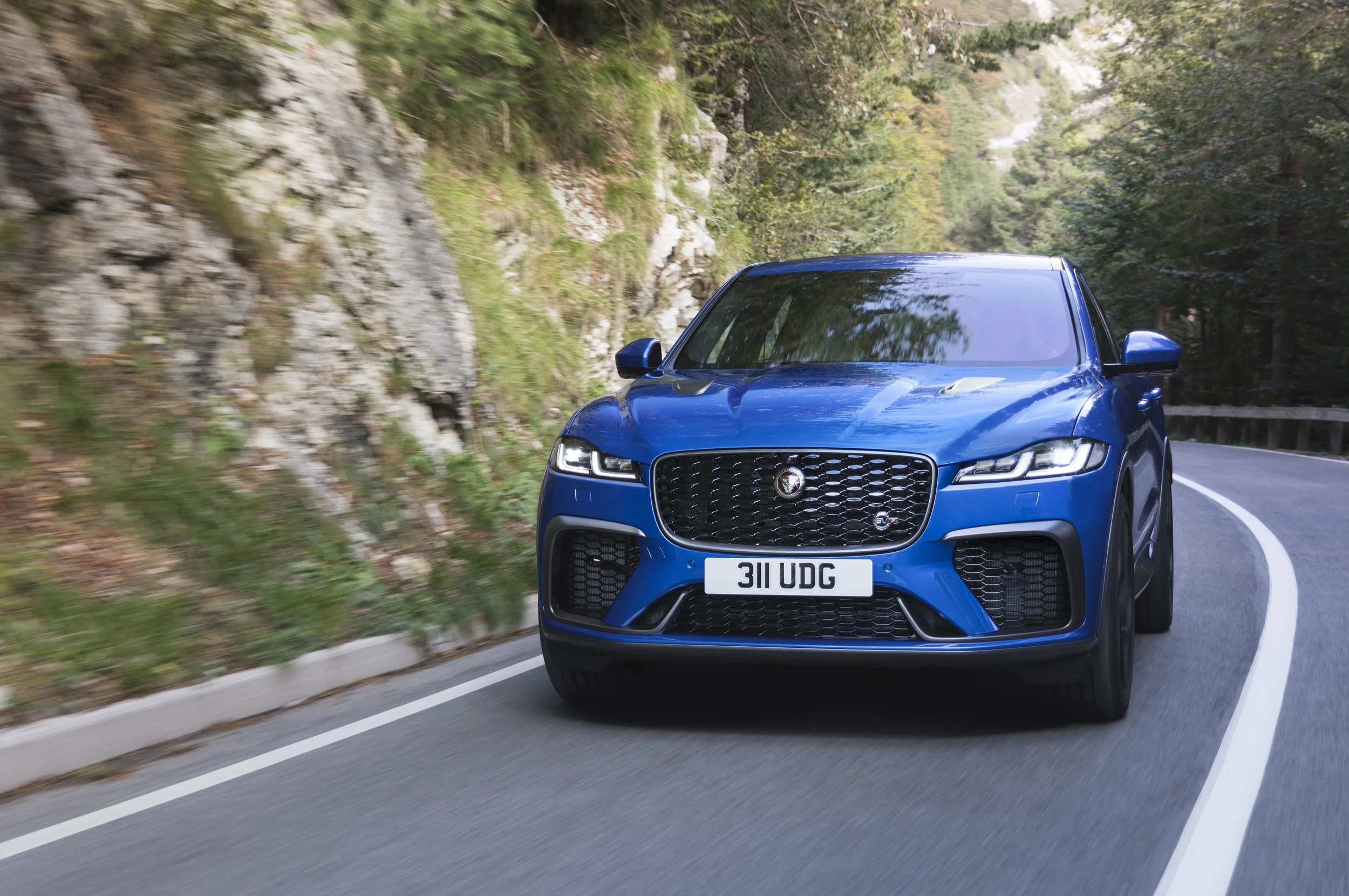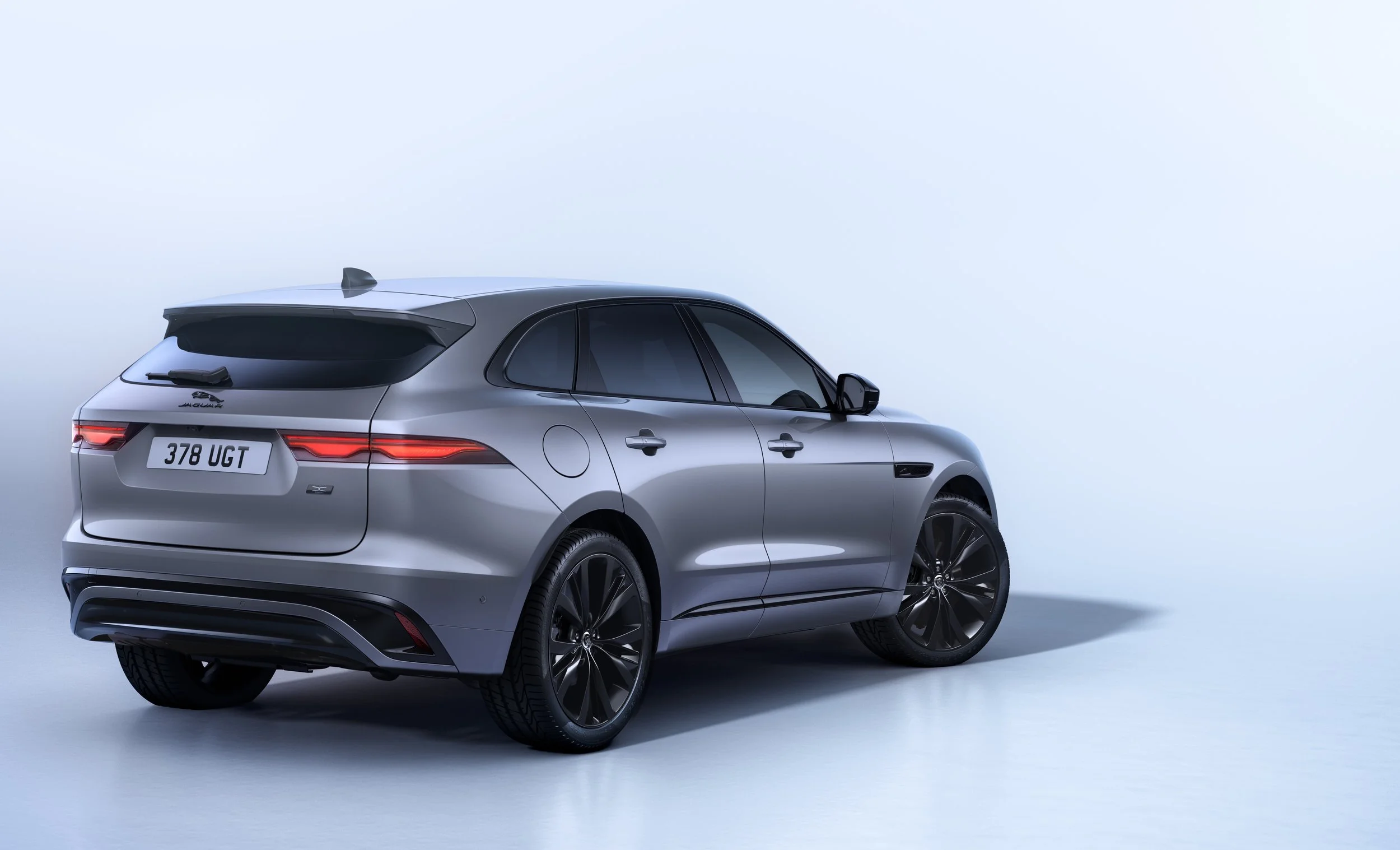Cat brand cool about impending model span
/Jaguar’s decision to cull all but one of its current cars in preparation for electric rebirth raises questions.
POTENTIAL it might for a time next year have just a single, well-established model to keep the flag flying has drawn a coy response from Jaguar Land Rover New Zealand.
In stepping up electric age entry intent, Britain’s biggest brand has decided now to curtail by year-end every car it currently makes - save one of its oldest. Even its current sole battery offer, the I-Pace, is being axed.
That the F-Pace (above) has been spared is relief in a way for JLR NZ as the now eight-year-old medium sports utility is its core performer.
What is not clear, though, is the potential of that model becoming the sole representative product in local stock at some point over the next 18 months.
The sunsetting of the combustion engine product and arrival of three new electric models is looking to be a careful international strategy, in which Jaguar’s largest export markets quite appropriately have priority over countries whose volume is very modest. NZ falls into the latter category.
Jaguar's United States operation, for instance, related publicly in March, even before the full changeover strategy was clarified, that it plans to have enough stock of cars already or soon to be curtailed to see it through the transition to three new models sharing a new JEA (Jaguar Electric Architecture) platform unrelated to the I-Pace.
JLR NZ has stopped short of voicing the same assurance in respect to the F-Type sports car and XE and XF sedans whose production ceased last month, plus the E-Pace and I-Pace that are set to die by Christmas.
Rather than discuss any element of the potential gameplay here, it yesterday fell back on a global statement.
“As JLR transitions to its electric future all current Jaguar nameplates remain on sale throughout 2024 and in some markets well into 2025 when Jaguar will begin an exciting new era as a pure-electric luxury brand,” it said via public relations company, Special PR.
“The Jaguar retail partners, and service network remains fully operational and will continue to deliver unparalleled levels of customer care and attention to our current Jaguar clients.”
The brand’s new route relies on three technically related models that draw nothing from the I-Pace (below).
The first of those is a four seater grand tourer touted as being in the same vein as the Porsche Taycan.
The car has been seen testing in heavily disguised form but is expected to uncloak soon, as international reveal of the model in production guise in 2024 has been promised.
It is set to go into production either late this year or early 2025. Jaguar UK has said it will have the GT model on sale next year, but there’s no clarity on the New Zealand market roll out.
The car will come with an estimated base price of $170,000, and will feature upwards of 428kW available (the most powerful Jaguar yet) with an approximate range of 692km.
A second EV that presents as a Bentley Bentayga-style luxury sports utility is set to be revealed next year and then a large luxury sedan, potentially in 2026.
Jaguar hurrying to curtail all but F-Pace so soon is a new twist to the ‘Reimagine plan’, a strategy laid out in mid-2023 that gave first clue to how the luxury car maker sought to establish an ICE-less future by combining sustainability and luxury.
Until a month ago, the plan was to cease making the XE and XF - which represent here in single ‘300’ series trim formats, for $97,000 and $123,000 respectively - and F-Type (here in $1193k P450 and $233k P575 forms).
Determining to also now add its smallest and least expensive car, the $93k E-Pace, and I-Pace (here in $123k SE and $133k HSE formats) to that hit list was only disclosed in late June.
Those models are the only non Brit-built Jaguars. Both are produced been under licence in Austria by Magna Steyr.
There is no certainty about how much longer Jaguar will keep making the F-Pace - which spans from $119k in 2.0-litre four-cylinder through to $182k in 5.0-litre V8 SVR - but it is already long in the tooth, being a design that first came on sale in 2017.
Going fully battery could well be challenging for old-schoolers who’ve known only a predominantly petrol-fed purr, but the state of the EV sector is also poor.
The hot run for electric experienced over the past three years is over; latest registrations data for July cements that year-on-year national volume is down 72 percent.
That has hurt I-Pace, a landmark luxury performance type that seemed a bold but well-timed pitch giving Jaguar a head start over competitors when it launched here in 2019. A slew of awards including 2019 New Zealand Car of the Year raised its stature and fuelled buy-in, but only to a point.
The electric vehicle specific website evdb.nz shows 345 I-Pace have registered nationally, 32 this year, but that count includes parallel imports.
I-Pace has also struggled elsewhere and a few weeks ago JLR global boss Adrian Mardell said it - along with XE, XF, E-Pace and F-Type - was a “close to zero profitability products.”
“We are eliminating five product, all lower value,” he told investors recently.
“None of those are vehicles on which we made any money, so we are replacing them with new vehicles on newly-designed architectures.”
Mardell says F-Pace does earn a living; in NZ as in the United Kingdom, it outsells the rest of the line-up combined.
Even so, in respect to overall prestige sector presence, the make that has presented as the best manifestation of classy British performance here for almost a century is not enjoying a strong position.
NZ is among markets where Jaguar gets to have its name first in JLR but in almost every other regard has long since been the minority partner to its SUV-making sibling.
JLR sales here follow international trend, with Range Rover, Range Rover Sport and Defender dominating. Between them those SUVs account for 59 percent of JLR’s 111,180 half-year global sales.
Conversely, NZ registrations data for the first half of the year suggests only 121 Jaguars have found homes. That’s essentially one sixth the national Land Rover/Range Rover tally for the same period.
Jaguar’s penetration is well behind other obvious foes in the premium sector.
At end of June, Audi, BMW, Lexus and Mercedes Benz had respectively clocked 584, 762, 660 and 682 registrations - not as well as this time last year, but now the market is is a slump.
Still, in 2023, Germany’s and Japan’s finest, all achieved over 1000 units respectively, Mercedes topping with just under 1500, whereas Jaguar nailed only 178 registrations.
That’s basically one tenth the LR/RR count for last year and big dive on 2022, when it was already niche with 415 cars were plated, though that was a lift on the 357 from 2021.
Jaguar having become an endangered species is a harsh hit, given it has been here for much longer than any of its competitors.
New Jaguars have sold here since the late 1930s. The famous Archibald and Shorter franchise holder is said to be the world’s oldest Jaguar dealer. The Shorter family’s association precedes the marque’s name by a year, as when they signed up it was SS cars. A brand name change to ‘Jaguar’ within the next year proved prudent for obvious political reasons.
Meantime, the new GT will be so radical as to represent a fresh start.
JLR’s chief creative officer Gerry McGovern said the styling of the GT and subsequent future Jaguars would be “the copy of nothing”, invoking the mantra and philosophy of founder Sir William Lyons.
The impending cars have been the result of an internal design competition that encompassed everyone in JLR’s creative team across all brands.
The creative team was split into three teams as part of Project Renaissance, which McGovern believes will go down as a pivotal moment in Jaguar’s history, with each given the same brief to create a family of models for Jaguar’s future.
A total of 18 cars were created as full-sized models in just three months across the teams, but the winning team accounted for just three of them. McGovern said the verdict on choosing this team’s design was “unanimous’’. “There was no debate. We said ‘that’s it.’”



















